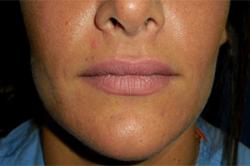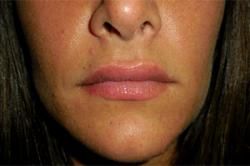Tissue Fillers San Antonio
Facial Rejuvenation
As we age our face loses volume as both the fat in our tissue and collagen (protein found in tissue) gradually disappear. In addition, over time our skin’s daily sun exposure decreases its ability to make collagen. As a result our face may begin to sag and look empty with wrinkles and lines appearing around our lips, eyes, forehead, mouth, and nasolabial folds (the skin creaseon each side of the face that runs from the corners of the nose to the corner of the mouth). The lips begin to lengthen, flatten and thin out. These changes begin in our twenties and thirties.
Besides following a healthy lifestyle, avoiding tobacco exposure and protecting your skin from the sunlight, tissue fillers can help reverse the signs of aging by adding volume and plumping up the tissue which eliminates fine lines, and wrinkles. By adding the volume that was lost over time, a more rejuvenated and youthful appearance is possible without changing the person’s overall look. These same fillers can be used to improve the appearance of some scars as well.
There are many different types of fillers available: some are artificial or natural, and temporary or permanent. Some fillers temporarily replace the volume that was lost while others help the body form new collagen to replace some of the volume that was lost; while some are meant to do both. Most fillers are temporary however. Nearly all of them require continued treatment to maintain the results. To improve the overall effect of these fillers, Dr. Chattar-Cora may suggest combining fillers with other non-invasive or surgical procedures.
Permanent Fillers
These fillers are not absorbed by the body. Caution is warranted when choosing these fillers since the appearance will not change with time. While this may seem appealing at the beginning; with the normal aging process as the tissues surrounding the filler changes with time the filler will not change its appearance with time. Thus with aging the treated area may not seem natural in comparison to the normal surrounding area. Other drawbacks about permanent fillers are the possibility that the body may react against the filler. This reaction may present with redness or severe disfigurement. Permanent fillers can be made of microscopic particles of medical cement mixed with animal collagen or can be made of silicone gel.
Over the past few years doctors have improved the ability to take unwanted fat from one area of the body and transfer it to another area. This is called fat grafting. Thus fat grafting has improved our ability to remove fat from an area that the patient feels has too much fat and transfer it to an area that needs to be augmented. This technique is frequently combined with liposuction and may need to be done under anesthesia depending on the patient’s desires.

Skin Procedures
Non-permanent fillers
There are many long lasting non-permanent types of fillers available. Some of these fillers are derived from collagens, while others are artificially produced substances that are naturally found in the skin. These collagens come from human or bovine (cow) or porcine (pig) sources. The animal derived collagens may cause an allergic reaction in some patients, thus skin testing and waiting several weeks before actually injecting the filler is necessary.
The human derived collagen is obtained from cadavers with the tissue being processed to prevent infections or rejection. These fillers can sometimes be injected without the need for anaesthesia, while other types of fillers may require the use of some form of anesthesia in order to place the product.
As a group, the effect of the collagen products last between six and twelve months.
Hyaluronic acid is a natural tissue filler that our skin produces, but as we age our cells lose the ability to make this filler. Hyaluronic acid can be produced in the lab with the use of bacteria or from the comb of roosters. These products are safe, and when injected into skin it attracts water thus maintaining the results for longer period of time and stimulating the body to produce collagen. Thus the results of these injections may last up to one year.
What is the recuperation period for tissue fillers? Are there risks associated with these procedures?
In general tissue fillers are out-patient procedures with most of these procedures done in the clinic and patients can return to work the same day. If patients are having fat grafting, depending on the quantity of liposuction that the patient desires this may require a trip to the operating room. The recuperation after fat grafting will depend on the amount of liposuction and fat grafting
Risks of these procedures include minor bruising which is temporary, and swelling if liposuction is done. Permanent fillers have the added risk factor that the effect is permanent and may not change with time. For more information, please contact San Antonio injectable fillers expert, Dr. Deowall Chattar-Cora to set up a consultation.



